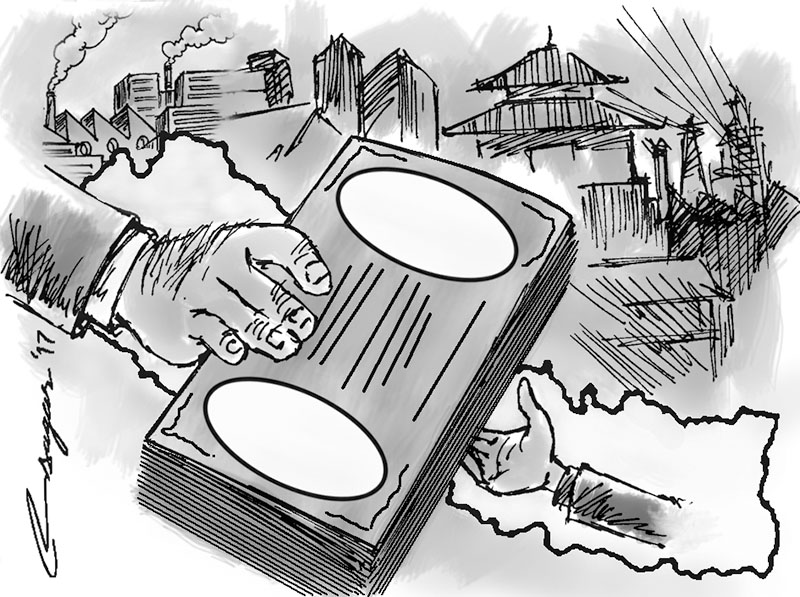80pc of foreign aid disbursed via budgetary system
Kathmandu, January 16
Around 80 per cent of foreign aid that Nepal received in the last fiscal year was disbursed through the government’s budgetary system, indicating growing trust of bilateral and multilateral agencies in the government’s fund execution mechanism.
The Development Cooperation Report 2017-18, which was unveiled by the Ministry of Finance today, shows that of the US$1.6 billion in official development assistance that Nepal received in the last fiscal year, $1.3 billion was disbursed through the government’s budgetary system. A year before that only 73 per cent of the official development assistance was distributed through the government’s budgetary system.
“This trend signifies growing trust of development partners in the resource distribution mechanism of the government,” said Finance Minister Yubaraj Khatiwada.
Nepal’s development partners disbursed $819.1 million in loans, $570.3 million in grants and $233.3 million in technical assistance in 2017-18. This implies 50.5 per cent of fund disbursed in the last fiscal year was in the form of loans, 35.1 per cent in grants and 14.4 per cent in technical assistance.
The disbursement of loans, grants and technical assistance in the last fiscal year witnessed a growth of 14 per cent from a year earlier. Nepal’s development partners had distributed $1.4 billion in loans, grants and technical assistance in the fiscal year 2016-17.
“The assistance modality across the world is gradually shifting from grant to loan and this is reflected in Nepal too,” said Khatiwada.
The World Bank Group was the biggest provider of foreign aid to Nepal in the last fiscal year. The Washington, DC-based multilateral lender disbursed $533.5 million in Nepal in 2017-18. The second biggest donor in terms of aid disbursement was Manila-based Asian Development Bank (ADB), which disbursed $291.7 million in 2017-18, followed by the European Union (EU), which disbursed $116.2 million, says the Development Cooperation Report.
Among bilateral donors, the United Kingdom topped the list with disbursement of $123.9 million, followed by United States Agency for International Development ($117.8 million) and Japan ($106.2 million).
According to the report, the economic reform sector received the highest volume of foreign aid in 2017-18, surpassing the education sector, the top recipient in 2016-17. In 2017-18, the economic reform sector received $210.7 million, or 13 per cent of the total foreign aid. Next in the league table was the education sector ($202.2 million) and urban development sector ($148.7 million).






